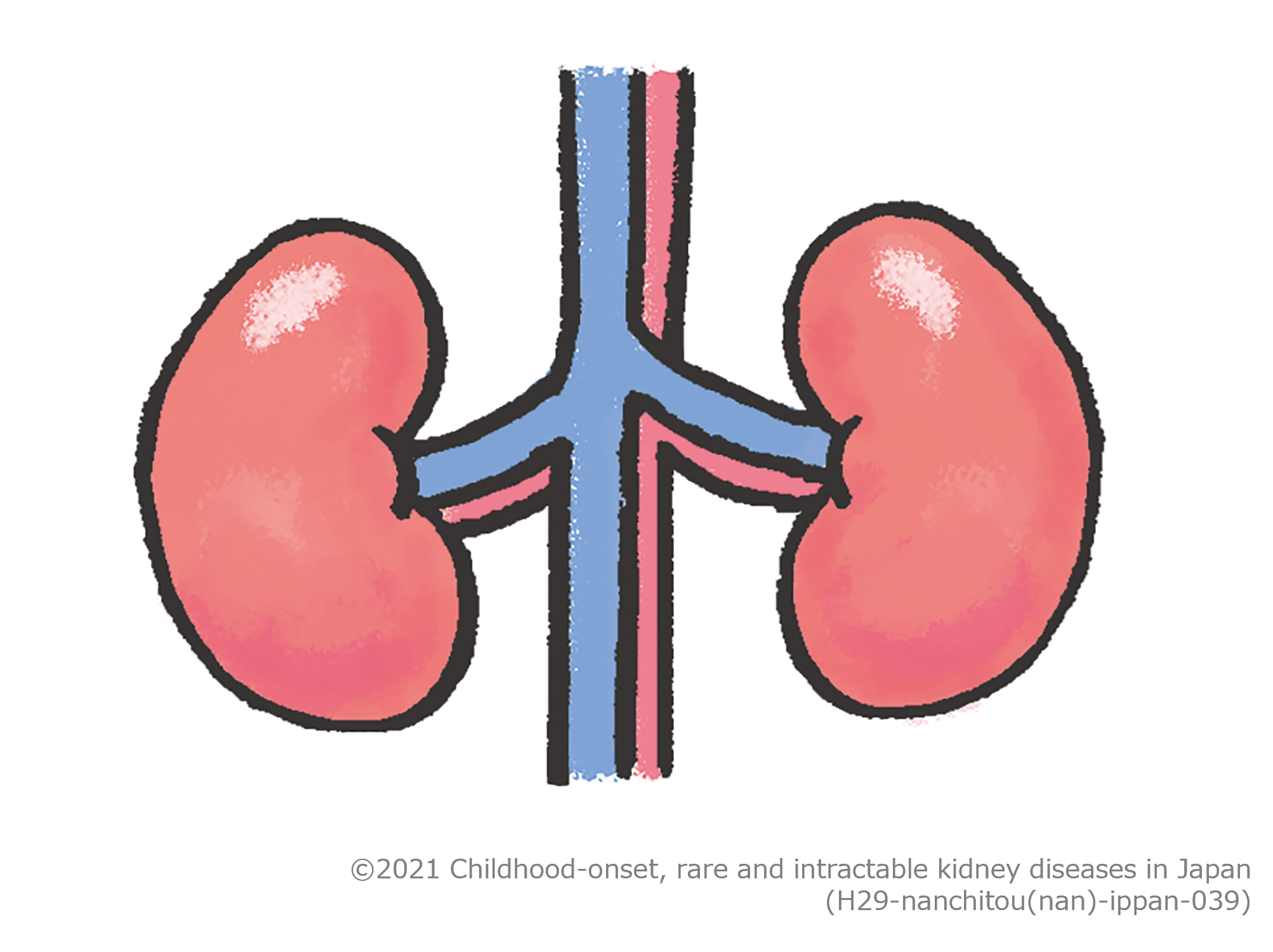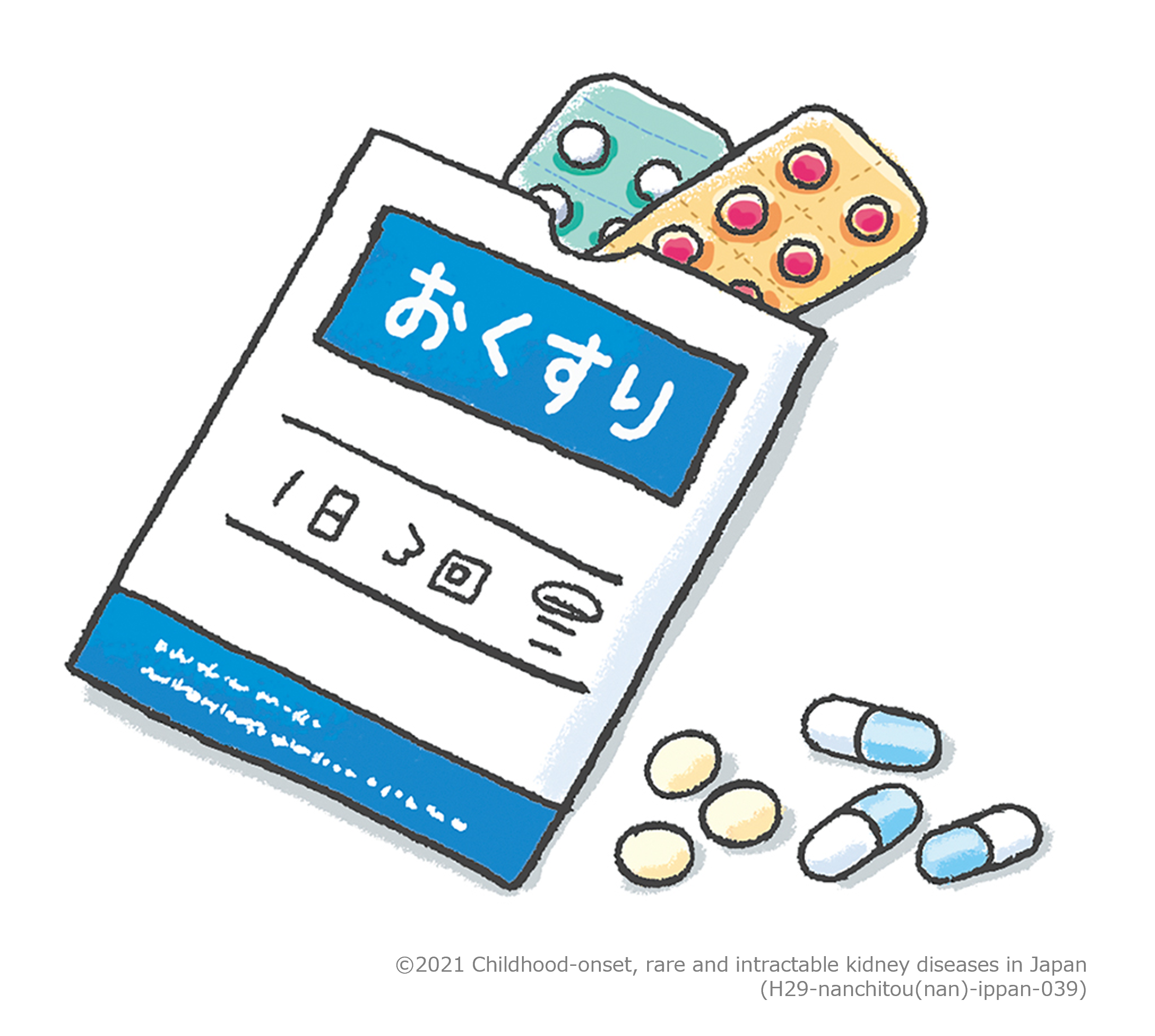
Nephronophthisis is a progressive cystic kidney disease characterized by cysts (round sacs) developing in
the kidneys.
Nephronophthisis is considered to be caused by structural and functional abnormalities of primary cilia in
the kidney tubular cells, which result in structural and functional kidney disorders.
Nephronophthisis can be classified into three types: infantile nephronophthisis, which progresses to
end-stage kidney disease (condition requiring dialysis or a kidney transplantation) at the age of around 3
to 5 years; juvenile nephronophthisis, which develops in infants or school-age children and progresses to
end-stage renal disease at a median age of around 13 years; and adolescent nephronophthisis, which
progresses to end-stage renal disease at a median age of around 19 years. Among these, juvenile
nephronophthisis is said to be the most frequent form.
In nephronophthisis, the function of the kidney tubules to reabsorb water and nutrients is impaired, and as a
result, the amount of urine increases, and a large amount of salt and water is lost. Consequently, the initial
symptoms include polydipsia, polyuria, daytime urinary incontinence and bedwetting, and growth disorders
(failure to thrive/short stature), and in juvenile nephronophthisis, these symptoms appear from the age of
around 4 to 6 years. Nephronophthisis is rarely detected by urine test abnormalities, and a low specific
gravity urine (low density urine) is observed. As renal dysfunction progresses, the amount of urine decreases,
and hypertension and anemia occur. In addition, about 10% to 20% of patients with nephronophthisis present
with extrarenal symptoms (e.g., eye manifestations,mental retardation, and skeletal and facial abnormalities),
which lead to the detection of the disease in some patients. In particular, retinitis pigmentosa (the most
common concurrent eye disease), eye movement disorders, liver fibrosis, abnormalities of the skeleton and
facial expression, etc. may serve as clues for an early diagnosis.
A diagnosis is often difficult. Genetic testing can help making a diagnosis, but genetic abnormalities are
found in only about 30% of patients. The diagnosis is made through a comprehensive evaluation of the symptoms
listed above, as well as the results of echography,kidney biopsy (procedure to collect a piece of kidney
tissue for examination), etc.
To date, there is no current fundamental treatment for nephronophthisis. Drug therapy and diet therapy are currently provided, with priority put on delaying the time at which end-stage kidney disease begins. Drug therapy and diet therapy are also given to treat complications, including hypertension and anemia. Furthermore, treatment with growth hormone may be prescribed for a short stature due to kidney failure.


As of 2017, the number of patients is reported to be at least 130.
Abnormalities involving the NPHP gene are known to be the cause of this disease, but patients without any abnormalities in this gene have also been reported.
It has mainly an autosomal recessive inheritance pattern, but sporadic cases (disease occurs sporadically and is not inherited by family members) have also been reported.
The range of exercise allowed varies depending on the kidney function.
To maintain one’s kidney function, sufficient water and salt should be taken while doing exercise to prevent
dehydration.
All patients develop kidney failure by adulthood.
If the disease progresses to end-stage kidney disease, a renal replacement therapy will be provided to
compensate for the renal dysfunction.
Renal replacement therapy includes dialysis (peritoneal dialysis/hemodialysis) and kidney transplantation
(living/deceased donor kidney transplantation). Renal replacement therapy is selected according to the
patient’s living environment and life plan based on a discussion between the treating doctor, patient, and
family.